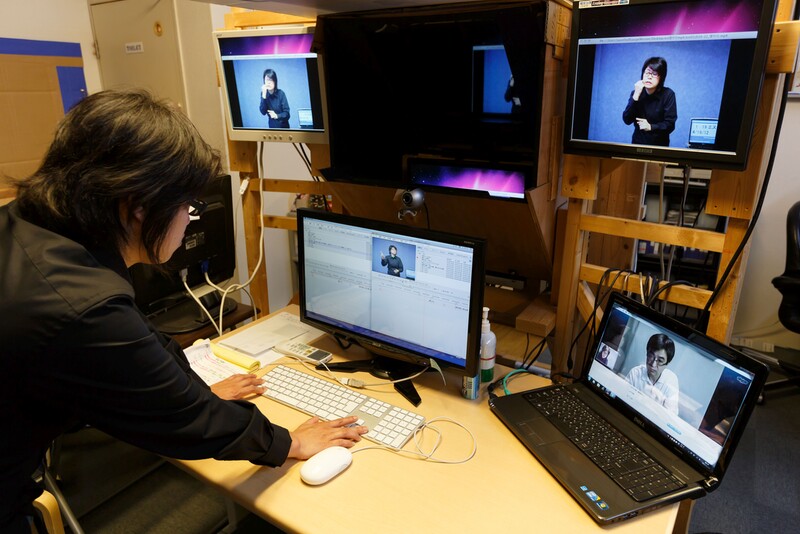When you imagine the work of Bible translation, you probably picture the end product as a book. Perhaps you see a thick, hard-cover Bible with hundreds of pages of dark print, along with a few illustrations and maps. But would it surprise you to learn that your printed Bible might be of little use to a deaf neighbour?
It’s a common assumption that deaf people can read, but in fact, reading requires an ability to hear the sounds represented by the written letters. For those who’ve never heard those sounds, it can be daunting to make sense of the lines, squiggles and curlicues found on a printed page.
That’s why Deaf communities around the world have formed partnerships with Wycliffe and other organizations to translate God’s Word into the languages they use to express their deepest thoughts and emotions—sign languages. To date, 144 sign languages have been added to Ethnologue, an authoritative international language register developed by Wycliffe’s key partner, SIL International. But many more are in the process of being recognized as official languages, says Carolyn Rehder, who serves in communications with SIL’s Global Sign Languages Team (GSLT).
“The research is just not complete, so our range of numbers is based on estimates and what we know that needs to be documented.”
Rehder and her husband Dan are but two of about 50 staff serving on the GSLT. They and others involved in sign language translation believe the total number of sign languages worldwide may well exceed 350.
Barriers to Learning

from a video recording session in Japanese Sign Language.
(Photo: Marc Ewell)
i
Whatever the final tally, Bible translation for the world’s Deaf is a monumental task. Population estimates for the Deaf vary; one SIL researcher estimates they number about 33 million, while the World Federation of the Deaf pegs the number at around 70 million.
However, the Federation’s estimate includes people with hearing loss who would benefit from closed captioning in videos and televised programs.
“Those people aren’t all necessarily part of the Deaf culture,” says Rehder.
That’s because people are not always born deaf; some lose their hearing through an accident or illness.
Such diversity creates huge barriers for Bible translation—as does the fact there’s no universal sign language to speed up translation for the Deaf.
Although some are able to read, it’s estimated that about 80 per cent of the Deaf throughout the world may never gain literacy skills because they have no access to formal education.
“The majority are functionally illiterate,” says Rehder. “Typically, hearing people learn to speak a language before they learn to read it.
“That is not the case for the Deaf.”
Excerpted from the article, Beyond Print: Bible Translation for the Deaf.
More: Bible Stories in Sign: A Look at One Team’s Translation Process (Wycliffe U.S. website)

